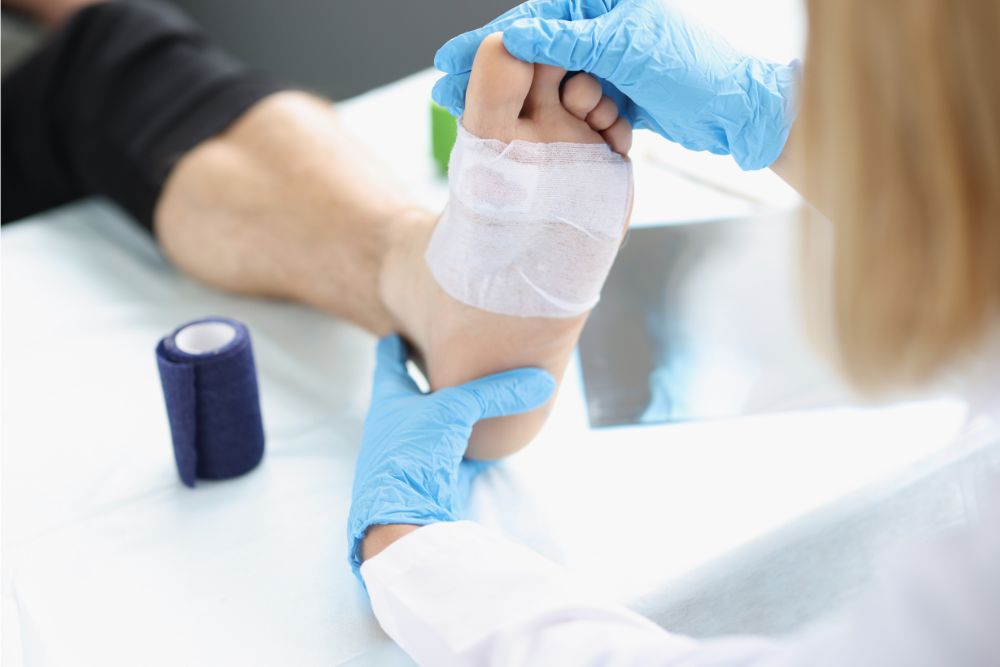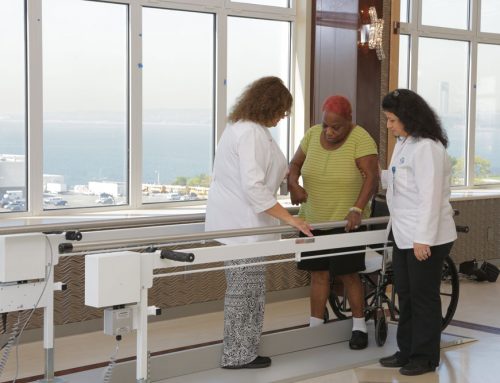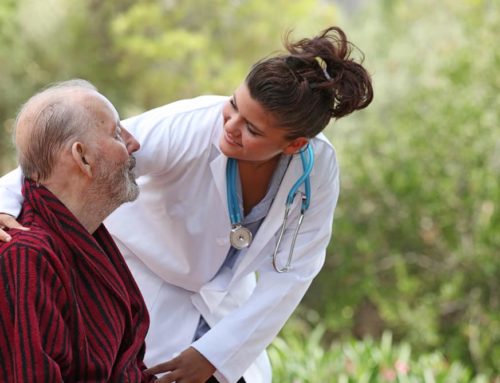Wounds don’t all have identical healing times since it depends on the severity of the damage. Minor wounds may take a few days or a week, while major wounds need several weeks to recover fully. Unfortunately, some turn into chronic wounds that never heal and often worsen over time.
To promote healing of those troublesome sores, your doctor may recommend professional wound care. The medical staff is well-trained in dealing with all wound types, using specialized treatments to manage healing and prevent further damage. They customize care to match each patient’s requirements to ensure a faster recovery.
I you live in Brooklyn, NY, contact us at Haym Salomon Home for Nursing and Rehabilitation for wound care, restorative rehabilitation services and speedy recovery.

What is a Chronic Wound
According to experts, a wound that doesn’t heal within 4 to 12 weeks, even with treatment, is considered chronic. Such sores commonly occur on the lower extremities but can show up anywhere on the body.
The symptoms usually include fluid leakage, itching, unpleasant odors, and red or brown coloring on the surrounding skin. Pain is also common, though nerve damage could prevent the wound from sending such signals to the brain.
Chronic wounds have several causes, including nerve damage, poor circulation, traumatic injuries, severe burns, and a weakened immune system. Seniors, a poor diet, or underlying health conditions could contribute to such sores.
Proper blood flow is crucial for wound healing, providing necessary oxygen and nutrients. Conditions like infection, poor immune system, peripheral artery disease or diabetes can reduce blood flow to the wound site and impair the body’s ability to repair and heal wounds.
Will it ever heal?
Yes, chronic wounds can heal, but their management often requires a comprehensive approach tailored to address the underlying causes and contributing factors. Infection control is very important in wound management. Managing chronic diseases such as diabetes, peripheral artery disease, and venous insufficiency is crucial. This may involve controlling blood sugar levels, improving blood circulation, and managing blood pressure.
Luckily, measures can be taken to heal even the worst chronic wounds, although the healing process can be slow, particularly in patients with severe underlying conditions. The first step is to treat any underlying condition causing or worsening the issue. Then, medical professionals clean the wound, clearing away any dead or infected tissue.
Regular monitoring and adjustment of the treatment are to ensure progress and address any complications promptly.
Make sure not to wait too long to seek medical assistance for your chronic wound. Techniques to improve blood circulation to the wound area, oxygen therapy and other treatments may be needed to prevent further complications.
Other possible treatments include compression bandages, antibiotics, pain medication, hyperbaric oxygen therapy, and ultrasound therapy. Your medical team will determine the best course of action for the type and severity of your wound.
Dressing is applied to protect the wound while soaking up any excess fluid. That is why it is crucial to get professional medical assistance for healing these wounds and not to neglect the delays with the healing.
Types of wounds
Several types of chronic wounds could affect you at some point. The most common include pressure ulcers, also called bedsores, arterial ulcers, and venous ulcers. Diabetic ulcers affect those with diabetes, resulting from nerve damage, increased pressure, and peripheral artery disease.
Traumatic injuries and surgical incisions may also become non-healing if not monitored and treated properly. If your minor injuries worsen or your severe ones don’t seem to recover after several weeks, seek medical attention immediately.
Healing wounds usually go through four stages, starting with hemostasis to induce clotting and prevent blood loss. Inflammation controls bleeding, removing bacteria and other germs to prevent infection. The proliferative phase includes rebuilding tissue to repair the damage. In the maturation phase, the wound fully closes.
Chronic wounds don’t progress through the four stages. Instead, they stop at the inflammatory phase rather than progressing to the proliferative stage of healing. The wound often becomes painful, losing layers of tissue and expanding if not dealt with.
In some cases, these wounds may take months or years to improve, while others never heal. Several factors could prevent recovery, including poor circulation, neuropathy, and mobility issues. Repeated trauma, reduced immune functions, and even stress can also affect healing.
Resources:
- NCBI, August 8, 2022, Chronic wounds
https://www.ncbi.nlm.nih.gov/books/NBK326431/ - Temple Health, Chronic Wound
https://www.templehealth.org/services/conditions/chronic-wound - NCBI, September 1, 2015, Challenges in the Treatment of Chronic Wounds
Robert G. Frykberg and Jaminelli Banks
https://www.ncbi.nlm.nih.gov/pmc/articles/PMC4528992/ - NCBI, January 6, 2017, Management of Chronic Non-healing Wounds by Hirudotherapy
https://www.ncbi.nlm.nih.gov/pmc/articles/PMC5339604/#:~:text=A%20chronic%20wound%20is%20a,months%20are%20often%20considered%20chronic - American Family Physician, Chronic Wounds: Evaluation and Management
https://www.aafp.org/pubs/afp/issues/2020/0201/p159.html - NCBI, August 8, 2022, Chronic wounds: Learn More – What are the treatment options for chronic wounds
https://www.ncbi.nlm.nih.gov/books/NBK326436/
This content comprises informative and educational resources only and can not be considered as a substitute for professional health or medical guidance. Reliance on any information provided in this article is solely at your own risk. If you have any inquiries or apprehensions about your medical condition or health goals, talk with a licensed physician or healthcare provider.






Leave A Comment